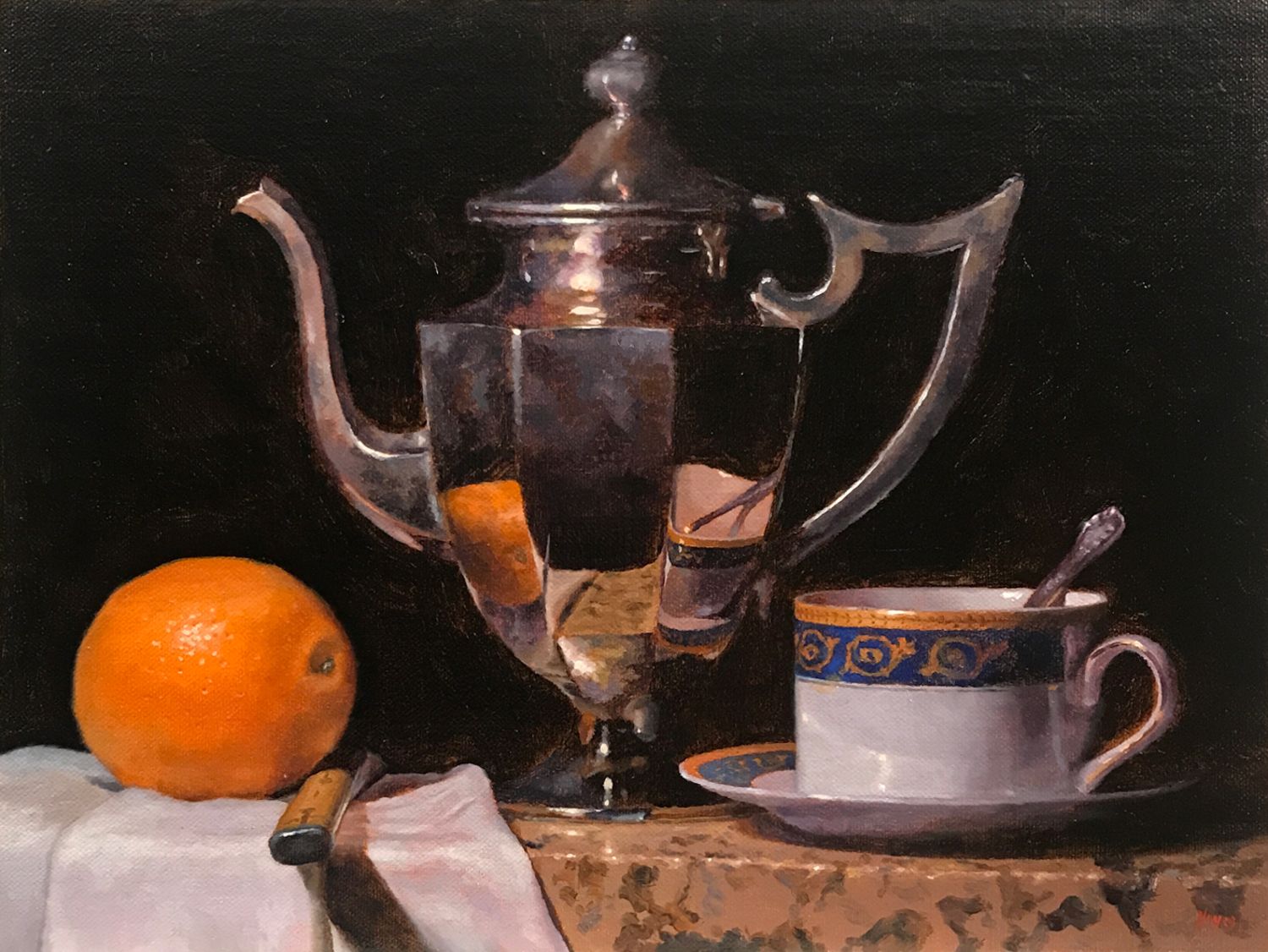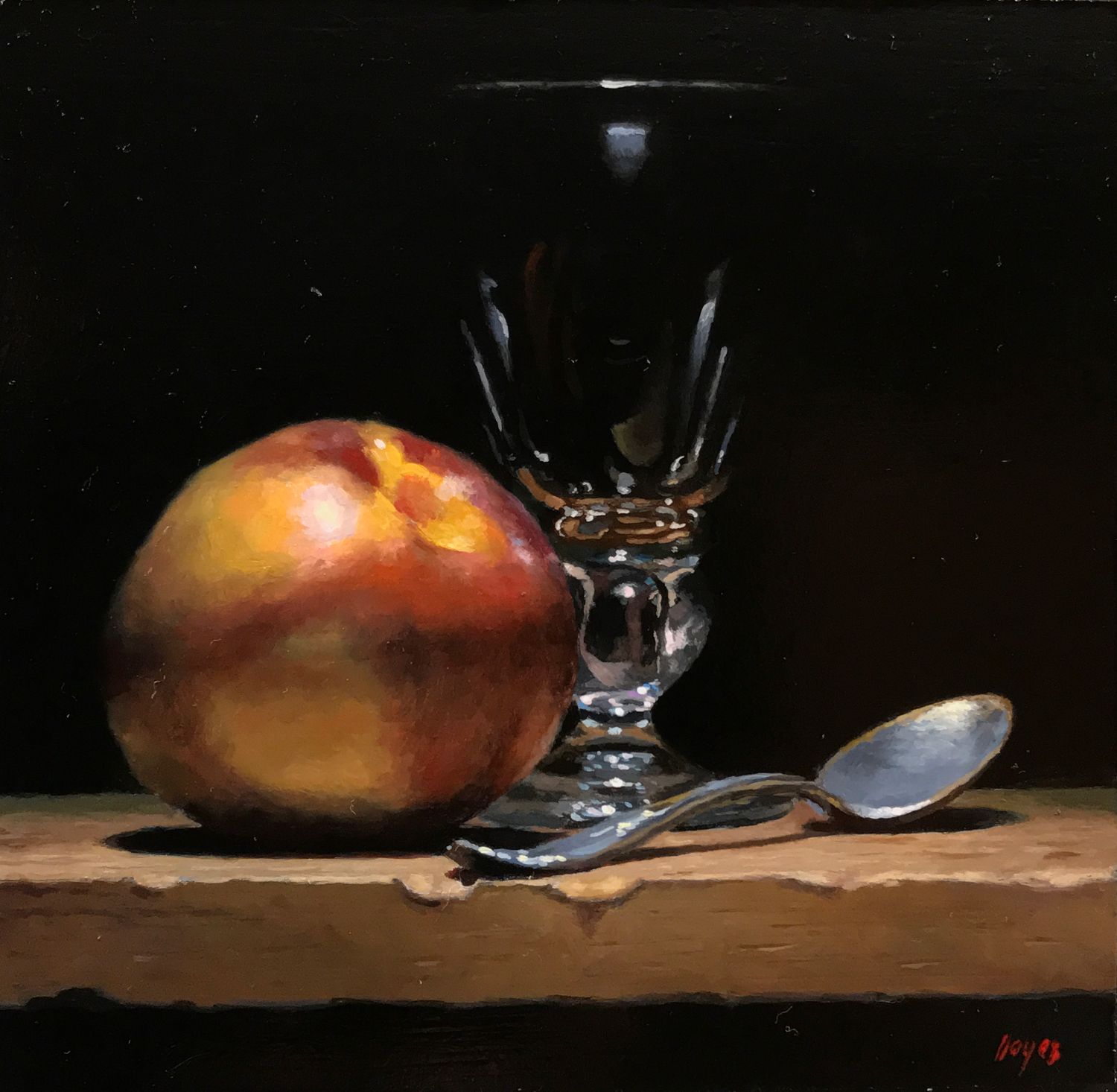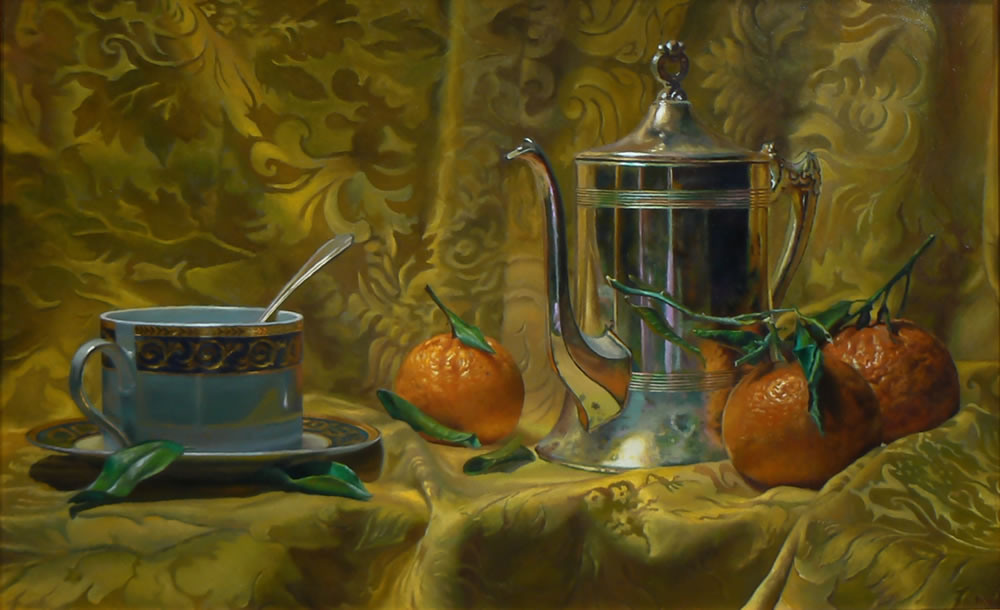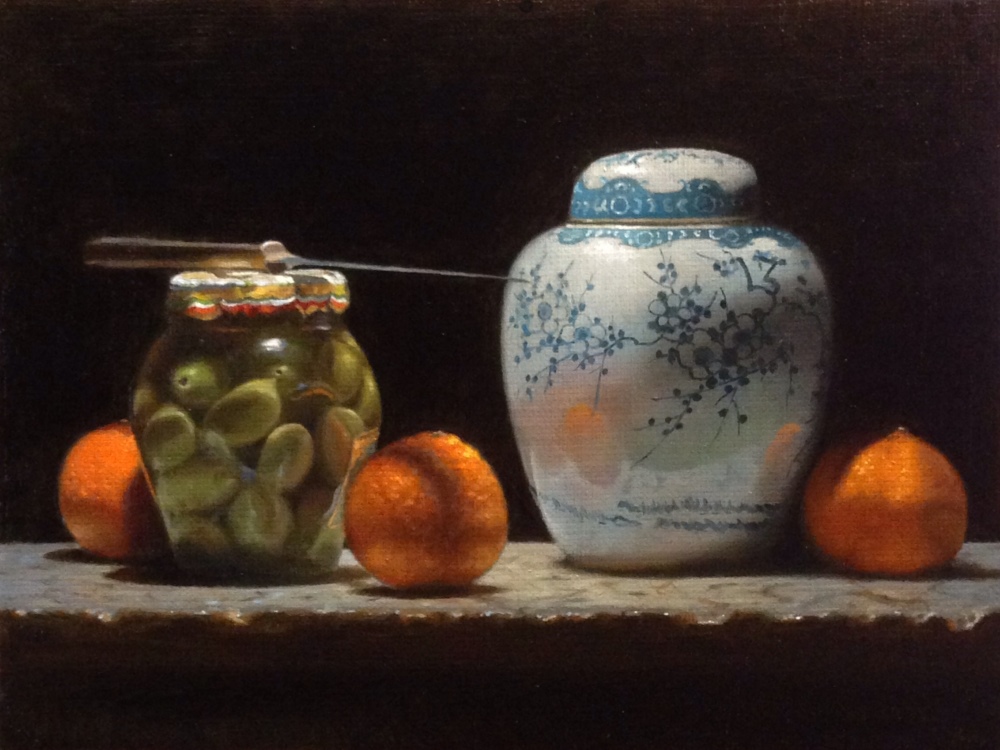Finding the Center of Interest Approaching a painting for the first time

oil on linen, 9×12 inches
Everybody looks at paintings differently.
When I stand in front of a painting, it’s not just me and the painting – it’s me, the painting, and all the thoughts, memories, opinions, and experiences I bring with me.
Obviously, my thoughts, memories, opinions, and experiences are different from yours.
In a very real way, then, the painting I see is not the painting you see.
Because of this, there is not any “right” way to look at a piece of art – and in the end, all that matters is whether you like what you see.
But… I have my own way of approaching a painting that I’m seeing for the first time, and I thought I’d share it.
There’s nothing formal about this approach – it really just grew out of me trying to get a better understanding of my gut feelings when looking at art.
It describes some of the things I value most about paintings, and helps me clarify why I may or may not like what I see.

oil on panel, 5×5 inches
So let’s imagine that a friend of mine just purchased a painting and can’t wait to show it to me.
I go for a visit, enter the room, and there it is – having pride of place in the center of the wall.
The first thing I notice… is the first thing I notice.
Most paintings have a center of interest where the eye is naturally drawn first, and I try to simply notice where my eye goes.
In a way, you can think of it as the center of gravity around which the rest of the painting revolves.
It’s usually not difficult to pick it out – in fact most artists work hard to make it obvious. I just try to clear my mind of preconceptions and let my vision relax for a moment. After that, my eyes just seem to naturally move toward this point.
This center of interest can be directly in the middle of the canvas, but it’s usually shifted off center somewhat. Artists often do this to create a more dynamic and lively composition – but not always.
Once I’ve identified that, I can start to look at the other parts of the painting – is anything else competing for my attention?

oil on panel, 15×24 inches
Simple paintings will often have only one center of interest, but more complex paintings can have secondary and even tertiary centers of interest.
If I see other centers of interest, I start to ask how they relate to the main center of interest.
Does the eye move naturally between them?
A well-designed composition will often deliberately encourage the viewer to follow a particular path around the canvas.
Do I notice this happening? Has the artist done anything to deliberately encourage me to look to different parts of the composition? Does the angle of a shadow or the position of a knife prompt me to look at different parts of the painting?

oil on linen, 9×12″
It’s usually a very good sign if my eye follows a pleasing, circular path through the painting, landing on one area first, then moving to the next, guiding me smoothly through the design.
Once I’ve become aware of these things, I feel like I have a good sense of the painting’s composition.
Next time, I’ll share how I try to perceive the flow of light through a painting that I’m seeing for the first time.